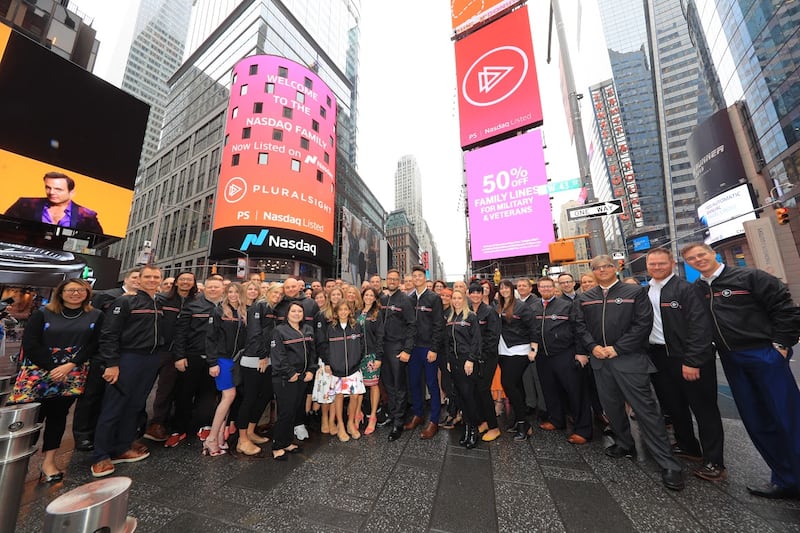This story appears in the May issue of Utah Business. Subscribe.
I grew up in Portland, Oregon, about 80 miles east of the Pacific Coast on the shores of the Willamette and Columbia rivers. In the early 1980s, not long after two guys named Steve founded Apple Computer, Inc., I got my first computer — an Apple II. Purchased by my father, the Apple II and its 8-bit microprocessor was my inaugural exposure to computers and technology. I was around eight years old.
Although my dad (an accountant) and I (a third grader) had no experience building software, we learned how to program together in the faint green glow of the 12-inch screen. It didn’t take long before I and many other Gen-Xers became hooked on computer technology and coding. By the time I graduated from Franklin High School, my journey as the future founder of a global technology skills development company had begun.
A breakthrough moment
After graduating from Brigham Young University with a bachelor’s degree in computer science in the mid-1990s, I worked as a programmer for a short time at 3M, Intel and Axiom Technologies. By the late ’90s, I took on a new role as an author and instructor at DevelopMentor. It was there that I began to author courseware and taught professional developer training courses for clients throughout the world.
During these formative years, I also discovered a passion for writing and speaking at developer conferences. I wrote three books and hundreds of articles. I spoke at numerous events in pursuit of lifting the entire developer community by helping them understand and leverage powerful new innovations. It was during these experiences that I had an “aha” moment: A real career opportunity existed to teach professionals and make a genuine impact in their lives. At this point, I enjoyed teaching so much that I quit my day job to become a professional teacher full-time.
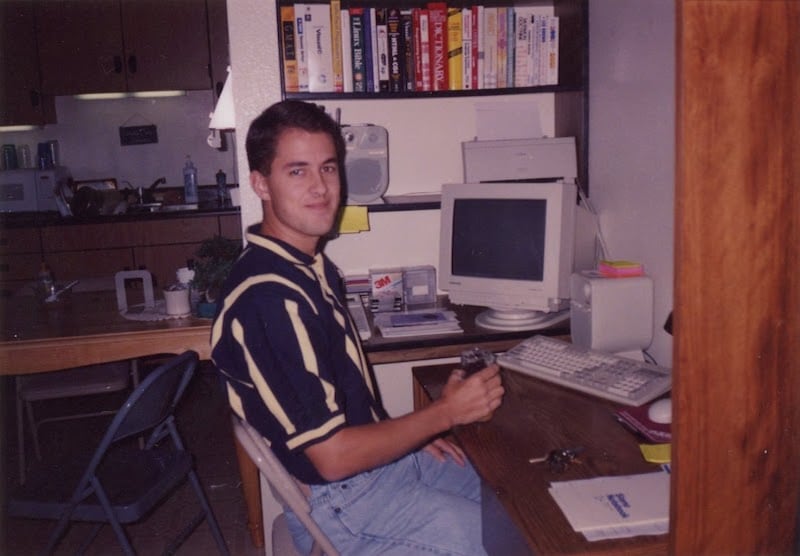
Classroom beginnings
During those years teaching at DevelopMentor, I met three teammates who shared my passion and with whom I would later co-found Pluralsight: Fritz Onion, Keith Sparkjoy and Bill Williams. After mustering up enough courage to leave our steady paychecks behind, we locked arms and formed Pluralsight in April 2004.
In those early days, Fritz, Keith and I traveled all over the world, teaching courses focused on quality technical content. We were typically hired by clients seeking expert instructors capable of ramping up their teams quickly through an optimal classroom experience that typically lasted four to five days.
Customers chose us because they saw us as “hardcore developers,” and they wanted the very best training. We focused on the quality of our instructors, content and our classroom experience.
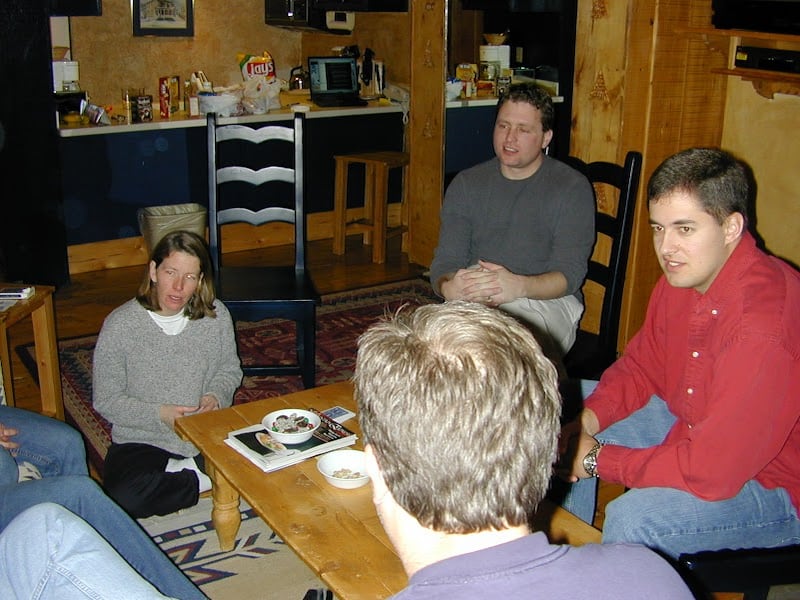
Using technology to teach technology
Three years in, I had an epiphany. While on a flight between trainings, I realized that we weren’t really doing anything innovative and there had to be a better way to deliver more value to our customers. This is when I realized we needed to use technology to change the way we teach technology.
I opened PowerPoint and started writing a deck titled “Pluralsight 2.0.” Within it, I wrote my vision for what could become “Pluralsight On-Demand.” The concept was to take what our team was teaching in a live classroom setting and offer it online through web and mobile experiences at a much lower price.
It didn’t take long to debate the merits of the idea with my co-founders, and we quickly agreed to go for it. Because three of us were software developers, we could roll up our sleeves and build it ourselves — and that’s exactly what we did.
Burning the boats
We launched the first version of Pluralsight On-Demand during the financial crisis of 2008 and 2009, and it was warmly received since training and travel budgets were being cut everywhere. By 2010, our online revenue matched our classroom revenue, and we were faced with the innovator’s dilemma: we couldn’t fully commit to this disruptive innovation while still serving our established “classroom training” business.
We decided to walk away from our established business model and half of our company’s revenue. We immediately stopped selling classroom training and committed all of our focus and energy to the new online model. Looking back, this “burn the boats” moment was probably one of the most important decisions we made. We watched our revenues double year-over-year for the next five years.

The benefits of bootstrapping
For nearly a decade, the only investment into the business was the $5,000 we each contributed to the startup — $20,000 total. We didn’t even think about pursuing external investments in those early days; we were just focused on creating value for our customers by evolving the product quickly. Given our “bootstrapping” efforts, we were highly profitable with a low-cost profile, so we didn’t experience any pressure to pursue outside investment before we were ready.
When you’re bootstrapping, you don’t have the benefit of big marketing budgets, so you have to make yourself a “purple cow” in the market. We did this by offering a low price point and subscription-based service that would give customers 10 times more value per dollar than they were getting in the classroom. It also allowed us to build a scalable business with controllable costs.
Fuel to the fire
By 2013, we started to receive unsolicited interest from investors. We were hesitant because we didn’t want to give up any control or add timing pressures, but as more competition entered the market, investors began placing bets on which companies would win. We wondered if we’d be able to keep up with those dollar-fueled competitors.
During an expedition to Nepal to climb the 17,575-foot Himalayan mountain Gokyo Ri, Fritz and I analyzed the company’s path forward. It’s amazing what clarity and vision can come when you are disconnected from the business and isolated in the mountains. At the conclusion of our climb, we called Keith and mutually agreed that the risk of not taking external investments to fuel Pluralsight’s progress was much greater than any other risk on the table.
Fritz, Keith and I worked aggressively to complete our first Series A financing to turbo-charge Pluralsight’s path forward. Within two months of landing back in the States, we closed our Series A for $27.5 million with Insight Partners.
We invested in building an enterprise-grade tech skills platform that delivered a range of learning capabilities. These capabilities included team management and reporting, skill analytics (e.g., Skill IQ and Role IQ), and hands-on learning experiences (e.g., labs and projects). At this time, Pluralsight was the first to offer these innovative capabilities.
After our Series A, Pluralsight acquired eight companies to widen the reach and impact of our offerings. These acquisitions allowed us to expand our audience beyond developers to all tech professionals while bolstering and strengthening our platform learning capabilities.
Those investments paid off and delivered results. In 2014, Pluralsight raised $135 million in Series B funding. At the time, this was the largest single round of corporate funding in Utah history.
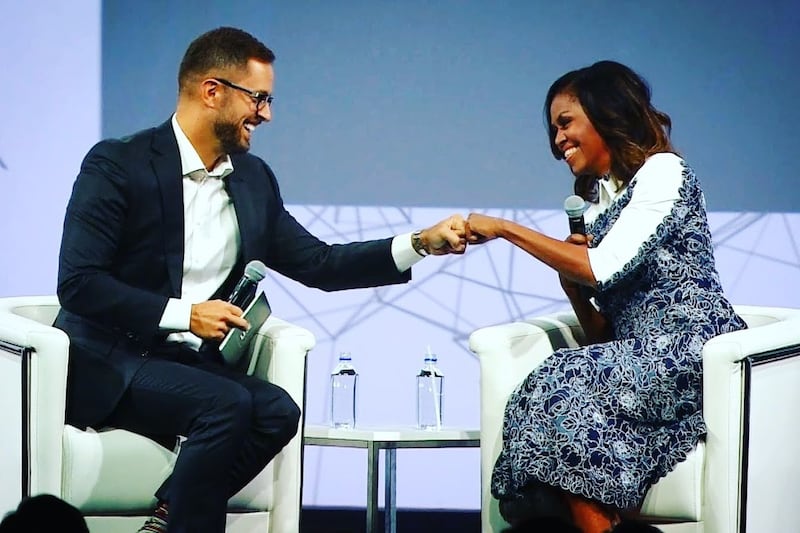

Multiple chapters of transformation
It became clear that a comprehensive B2B strategy was needed to set ourselves up for long-term success. As a result, Pluralsight created a mechanism for businesses to buy licenses for their teams online. We instantly saw demand for it and realized we needed a full-blown salesforce.
We implemented a B2B strategy and leveraged our B2C customers to fuel its growth. This enabled the business to create a go-to-market experience that took Pluralsight to the next level and allowed us to achieve economies of scale in today’s marketplace. As our value proposition continued to evolve, we decided to take the company public via IPO in 2018.
During this time, we saw vertical-specific competitors like A Cloud Guru (ACG) emerge in the market. We also saw other competitors going broad and wide at much lower price points. Ultimately, we needed to adapt again and evolve our strategy to meet this challenge head-on, but found we couldn’t move fast enough as a public company.
In 2021, Pluralsight was acquired by Vista Equity Partners. This milestone, which made Pluralsight a private company again, enabled us to reach another exciting moment in our journey: the acquisition of ACG later that same year.
When working from home became the new normal, a massive transformation to the cloud began across many industries. Armed with ACG’s valuable content, labs and sandboxes, we helped upskill individuals and teams who were responsible for accelerating innovation and migrating their organizations to the cloud.
When generative artificial intelligence (Gen AI) exploded onto the scene, the need for upskilling workforces in AI became more important than ever before. As part of our overall focus on AI upskilling in 2023, Pluralsight launched hundreds of AI courses and rolled out AI Sandboxes in 2024, an immersive experience for practicing and exploring AI tools, services and solutions in an isolated, pre-built environment. Our three unique experiences — Prompt sandbox, AI cloud sandboxes, and SageMaker Studio Notebook — allow organizations to build real-world AI expertise and validate practical experience.
Giving back
In 2016, I became a co-founder of Silicon Slopes. Prior to that, I was also a member of the board of trustees for the Utah Technology Council, the state’s premier professional association for more than 5,000 high-tech, clean-tech, and life science companies.
But what I’m most proud of is launching Pluralsight One in 2017, a social impact initiative committed to equipping nonprofit organizations with the tech skills they need to chart their own futures and strengthen their communities. My wife Monica and I joined forces with Fritz and his wife to fund and fuel this work by donating 1 percent of the company’s equity. We all continue to sit on the Pluralsight One advisory board to guide the grants we make each year.
In 2019, Pluralsight One made a grant to the State of Utah to drive computer science education in our K-12 schools. Our goal was to ensure that every school in Utah offers computer science classes at every grade level so that every student in the state has access to the opportunity it creates. Today, over 70 percent of our schools have achieved this outcome, and the legislature has appropriated more funds for FY25 to continue the work toward 100 percent.
Today, Pluralsight One has more than 800 nonprofit and K-12 participants and seven strategic partners. It has provided over $38 million in product and financial grants.
I also joined the Utah Board of Higher Education last year, which is charged with driving innovation to improve access to higher education for everyone in Utah. The board has appointed a new commissioner and eliminated all in-state college application fees. We’ve held the line on rising tuition rates, and we’re the first state system to adopt a policy to create three-year bachelor’s degree programs.
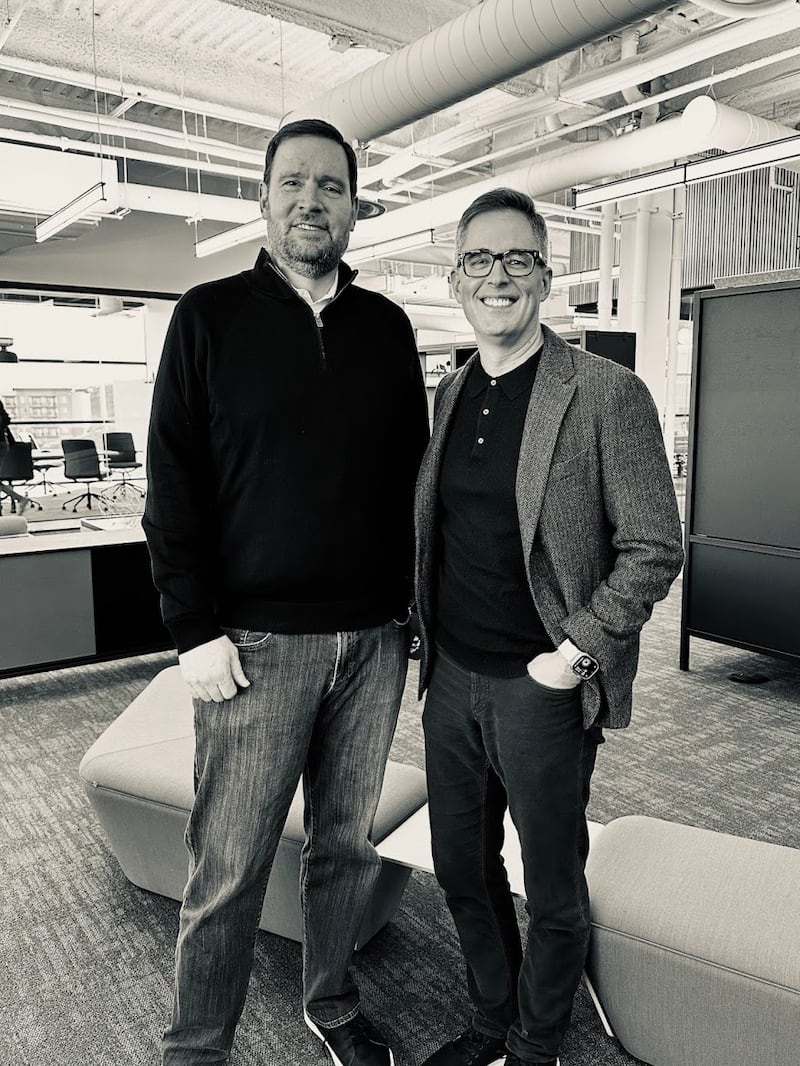
The future is bright for Pluralsight
In 2022 and 2023, like so many other tech companies, we hit some speed bumps. The economy was challenging, and as a result, we had to say goodbye to some of our team members. This was one of the hardest things I’ve ever had to do in my career because we greatly value our team members and culture. I’ve learned many lessons through all of this, but perhaps the most important one is showing kindness and respect for all involved.
I am still looking to the future and embracing change. In April, I stepped down as CEO of Pluralsight and became a special advisor to Pluralsight’s board and the newly appointed CEO, Chris Walters. In my new role, I will be closely involved in the company’s strategic initiatives and its contributions to Utah’s communities.
The Pluralsight journey has been rich and full of evolution. Along the way, we completed over 10 acquisitions and created many of our own “industry firsts.” The company’s incredible growth and success would not have been possible without the talent, support and drive of everyone who helped make Pluralsight what it is today.
